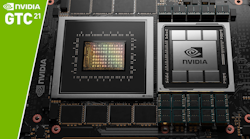Some diode manufacturers caution against using the diode tester function in ohmmeters because it could exceed the reverse-voltage and forward-current ratings of sensitive diodes. This is especially true in optical devices such as photodiodes and laser diodes.
However, the circuit described here performs a simple go/no-go test on these diodes while limiting forward current and reverse voltage to safe levels (see the figure). Designers can tailor the circuit for different reverse voltages or forward-current levels.
J1 is a momentary switch that initiates the test. S1 reverses the polarity of the signal to the diode under test (DUT), D3, to check the device in forward and reverse modes. In forward mode, approximately 150 µA flows through the diode, causing D4 to be reverse-biased and holding comparator U1’s inverting input low. This turns off the red LED. The non-inverting input of U2 is also low, which turns on the green LED to indicate forward conduction.
When S1 is switched to reverse-bias mode, D4 is forward-biased, which turns the red LED on and the green LED off. If the DUT is open, the red LED will always be on. If the DUT is shorted, the green LED will be on with S1 in either position.
The circuit values shown limit the forward current to a safe 150 A and maximum reverse voltage to 1.2 V. Some simple modifications to the circuit can change these limits.












